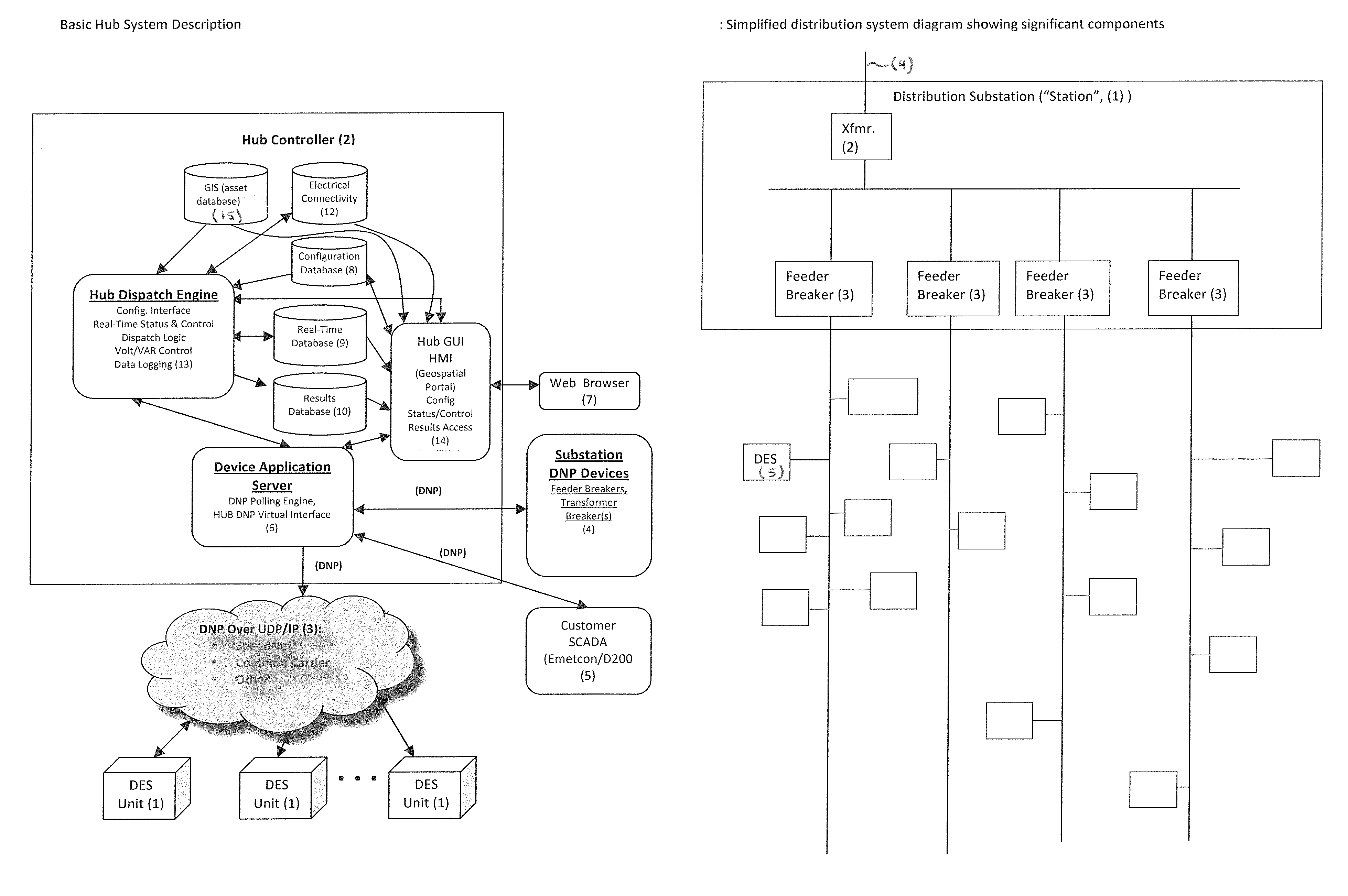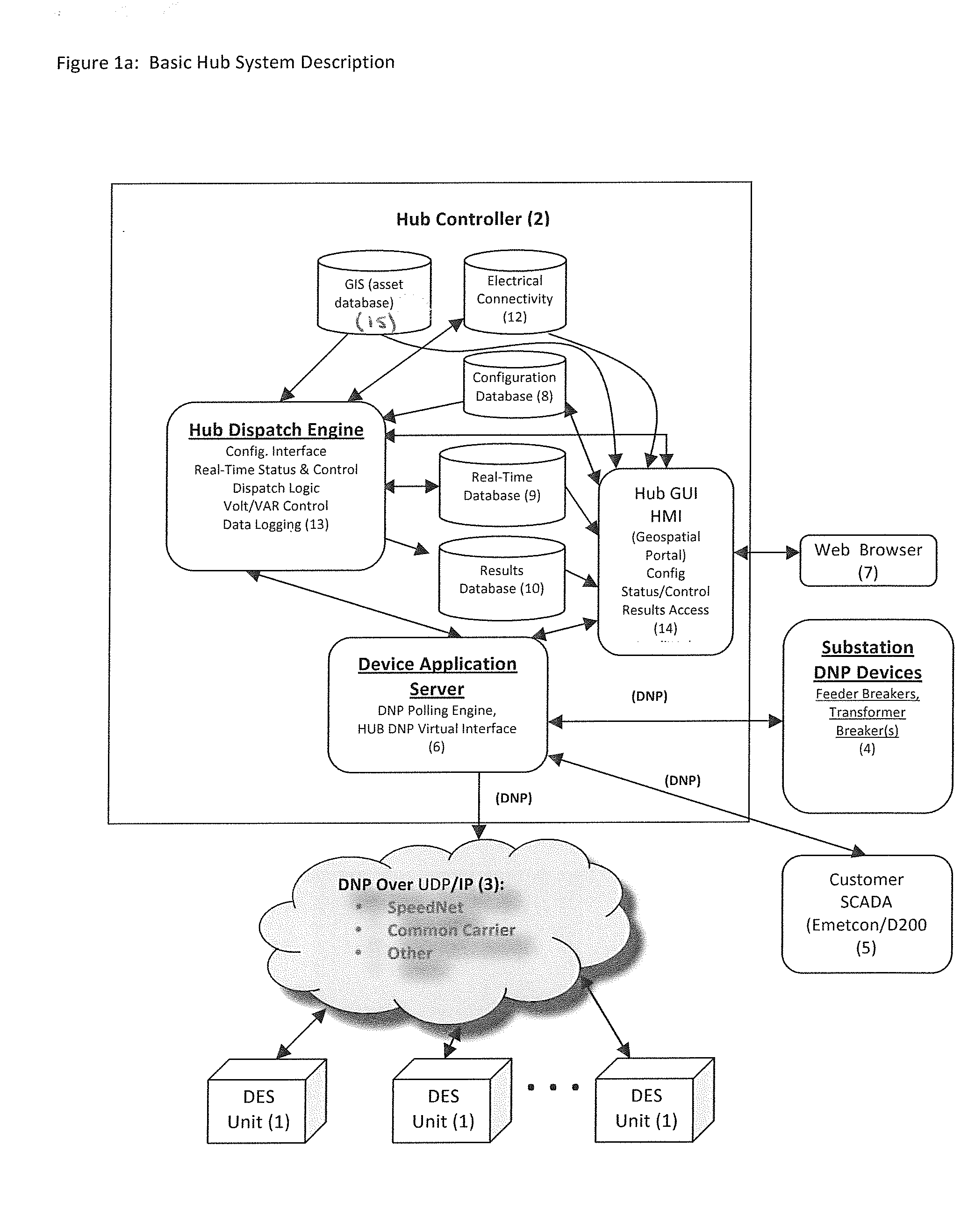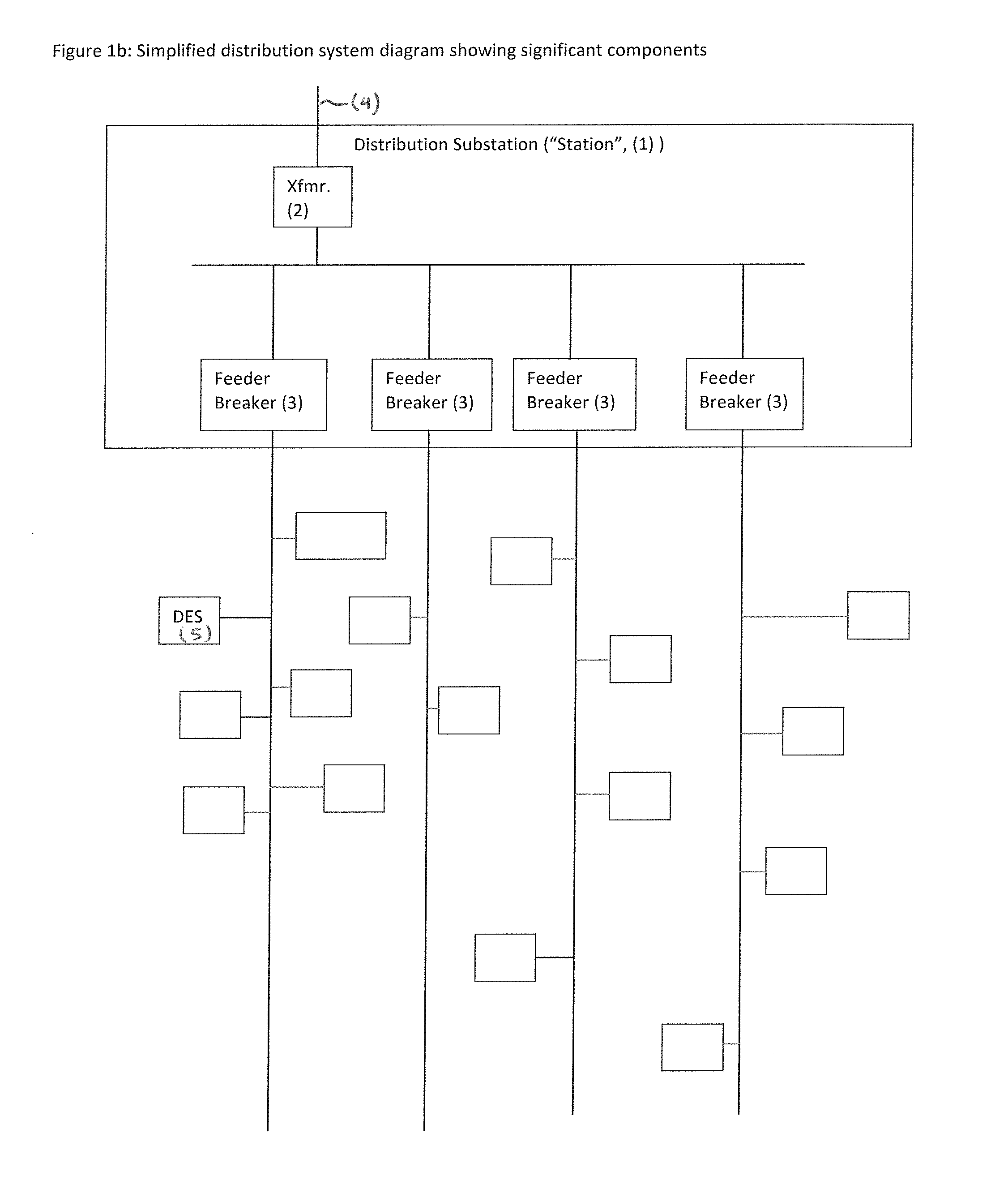As a result of the rapid emergence and convergence of these new technologies and others, little attention has been placed on how DES could be leveraged to meet other important capacity constraints in the distribution grid.
That is, not all capacity constraints are related to
peak demand for generation capacity.
For example, the
distribution system is fed from distribution substations, and the transformers in these substations are extremely costly and difficult to replace.
Capacity constraints in these transformers, or loss of capacity due to end of life or other operational issues, can create overheating (hot spots), leading to unexpected failure and concomitant risk of service interruption.
Another capacity constraint is the distribution feeder itself, particularly in the most-heavily utilized sections near the substation.
Underground, high-
voltage cable is very expensive,
heat sensitive and replacement is even more problematic than substation transformers.
On the other hand, a substation
transformer capacity limitation is inherently phase-specific.
For example, using DES units, a capacity limitation on Phase A, being specific to Phase A, can only be addressed by reducing loading on Phase A. However, a DES unit downstream from the
transformer on any feeder could
discharge energy to reduce load as long as it was on Phase A. In contrast, a capacity limitation sensed at the head of a
single phase of a feeder can only be addressed by shifting load to DES units on that phase and on that feeder.
It's possible that multiple capacity constraints, particularly at times of near brownout or blackout conditions, may exist simultaneously.
Under this
scenario, complex decision-making may be necessary to prioritize and mediate the various constraints.
Since these units are geographically dispersed there is a need to level out the usage of the units to prevent over-utilizing or exclusively-utilizing specific units, requiring premature battery replacement in those units, while failing to
gain benefit from the investment in other units.
The analysis of capacity based on component overheating is much more complicated when the components are packaged or in some way thermally constrained.
The individual windings of the transformer are typically immersed in oil, adjacent to, and influenced by the other windings, and affected by very complex electrical phenomenon such as the internal absorption of
power flow harmonics, circuit imbalance,
power factor and aging of components.
Because of the substantial expense and customer service impacts of a transformer failure, these
derating factors tend to be very conservative.
Due to the inherent variability of the above factors, even with the best design tools, the true, real-time capacity of the
distribution system can only be guessed.
However, without the ability to immediately reduce load when this point is reached, the
distribution system operator must either allow the transformer to be damaged and risk
catastrophic failure, or temporarily disconnect customers from service.
The challenge of estimating and monitoring the capacity of underground feeder is even more complex than of the substation transformer.
Dense runs of insulated conductor in conduit, in confined air spaces, adjacent to other potentially heat-generating cable, surrounded by thermally insulating earth, can create unpredictable and unexpectedly-high operating temperatures.
Even with sophisticated programs such as CYMCAP™, precise cable capacity
estimation is difficult for a variety of reasons such as variations in the thermal insulating properties of the earth along the feeder.
As with the capabilities of transformer hot spot monitoring, lacking the ability to immediately reduce load when the real-time thermal capacity is reached, the distribution
system operator must either allow the cable to be damaged and risk
catastrophic failure, or temporarily disconnect customers from service.
However, unlike transformer overloading that could be mitigated with substation energy storage, feeder overloading can only be mitigated by reduction of load (such techniques are usually referred to as “demand reduction” or DR) or generation of energy on the feeder using a
system such as distributed storage.
However, due to the small size of the DES units, even with only RPC active, the total compensation on a feeder is only slightly larger than a single 1,800 kVAR
switched capacitor bank.
During peak loading, when DES is needed for real power peak shaving, very little residual RPC is available.
 Login to View More
Login to View More  Login to View More
Login to View More 


